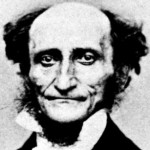There has been some extensive discussion surrounding my book on Brothers of John the Steadfast due to my utilization of theosis terminology. Understandably, the language of theosis is misunderstood by many to mean that man somehow becomes, in essence, God, or that this somehow downplays forensic justification. I have done several pieces of writing on this topic, such as here, here, and in my book. This is a brief attempt to clarify the meaning of Christification. I define Christification in my book in the following words:
Christification is the ontological union of God and man, initiated through the incarnation, which the Christian partakes in through faith. Through this union, that which belongs properly to Christ, namely divine incorruptibility and immortality, is transferred to the believer by faith. This union is increased and strengthened as one participates in the sacramental life of the church, and it is demonstrated through growth in personal holiness.
The utilization of the term ontological does not mean that our nature is transformed in such a way that we are no longer human, and somehow take on God’s own essence. This is apotheosis, and is rejected by all Christian traditions. What is meant by “ontological” is that this union is not purely relational, nor is it an external union, or a simply union of wills (Ritschl); it is a union of the substance of God with the substance of man in such a way that the two interpenetrate one another, but are not confused. Hoenecke explains:
According to these passages the essence of the mystical union is that God according to his substance in a miraculous way is close to the substance of humans and permeates their substance with his essence (Jn 17:21-23), and dwelling in the believers, he so works in them that they are filled with knowledge and all the fullness of God (Eph 3:17-19). When we describe the mystical union as the presence of the divine substance with the substance of humans, we express its intimacy. Two intimate friends cannot be so closely united. With the substance of their souls they are near each other; but God and the believers are in each other. The substance of both touches each other most closely; indeed the divine permeates the human. But self-evidently, every thought of an essential partaking of the believer in the substance of God, every mixing of God and man, every pantheistic notion of deification is far from this. ELD III, 386
God’s own divine nature permeates our own nature. In doing this, God makes us more like himself as we are conformed in the image of Christ, as Walther explains:
Exactly thus Christ not only wants to forgive all men their sins, but also to free them from their sins. He not only wants to declare them righteous by grace, but He also wants to make them truly righteous. He not only came to comfort and soothe their hearts, but also to cleanse and sanctify them. He came not only to reconcile them with God, but also to reunite them with God, not only to make them acceptable to God, but to make them like God. In short, He came to restore the entire lost image of God in them. He came to lead them back into the state of innocence, to make them perfectly healthy in body and soul, and thus finally to bring them to the blessed goal for which God destined them from eternity and called them into existence. (The entire sermon can be found here)
The themes of union with God and sanctification are intimately connected. Joseph Stump explains: “The fullness of the experience is proportioned to the degree of faith and sanctification. The union is established when the sinner comes to faith and is justified, and grows more close, intimate and strength-giving as his sanctification increases. The spiritual life which he leads has its source and vitality in Christ. Believers live in Christ, and He in them, and His life flows into and through them. Without Him they can do nothing (John 15:5)” (This section of The Christian Faith can be found here).
There is no attempt on my part to introduce Eastern Orthodox concepts into Lutheranism which have not been a part of our tradition. Instead, this is an attempt to revitalize this historic Lutheran teaching. Some have asked: “Why are you using a new term? Why aren’t you just saying unio mystica?” I have no problem with the term “mystical union,” nor with the term “sanctification.” Henry Eyster Jacobs notes that the separation of sanctification from union in dogmatics texts is an unfortunate development, because the ontological indwelling and good works of the believer seem to be disparate topics. I am sympathetic to this concern. Thus, the term Christification is an attempt to encapsulate the sanctified life and the unio mystica in one comprehensive reality.
Here are some resources for those interested in the topic:
The Restoration of the Divine Image Through Christ: A sermon by C.F.W. Walther
David Hollaz on the Mystical Union
Joseph Stump on the Mystical Union
Conrad Lindberg on Mystical Union
Revere Franklin Weidner on Mystical Union
Mystical Union in the Lutheran Tradition (Podcast)
Theosis and Mystical Union (Podcast)
The Vital Place of Union in Lutheran Soteriology Part 1










